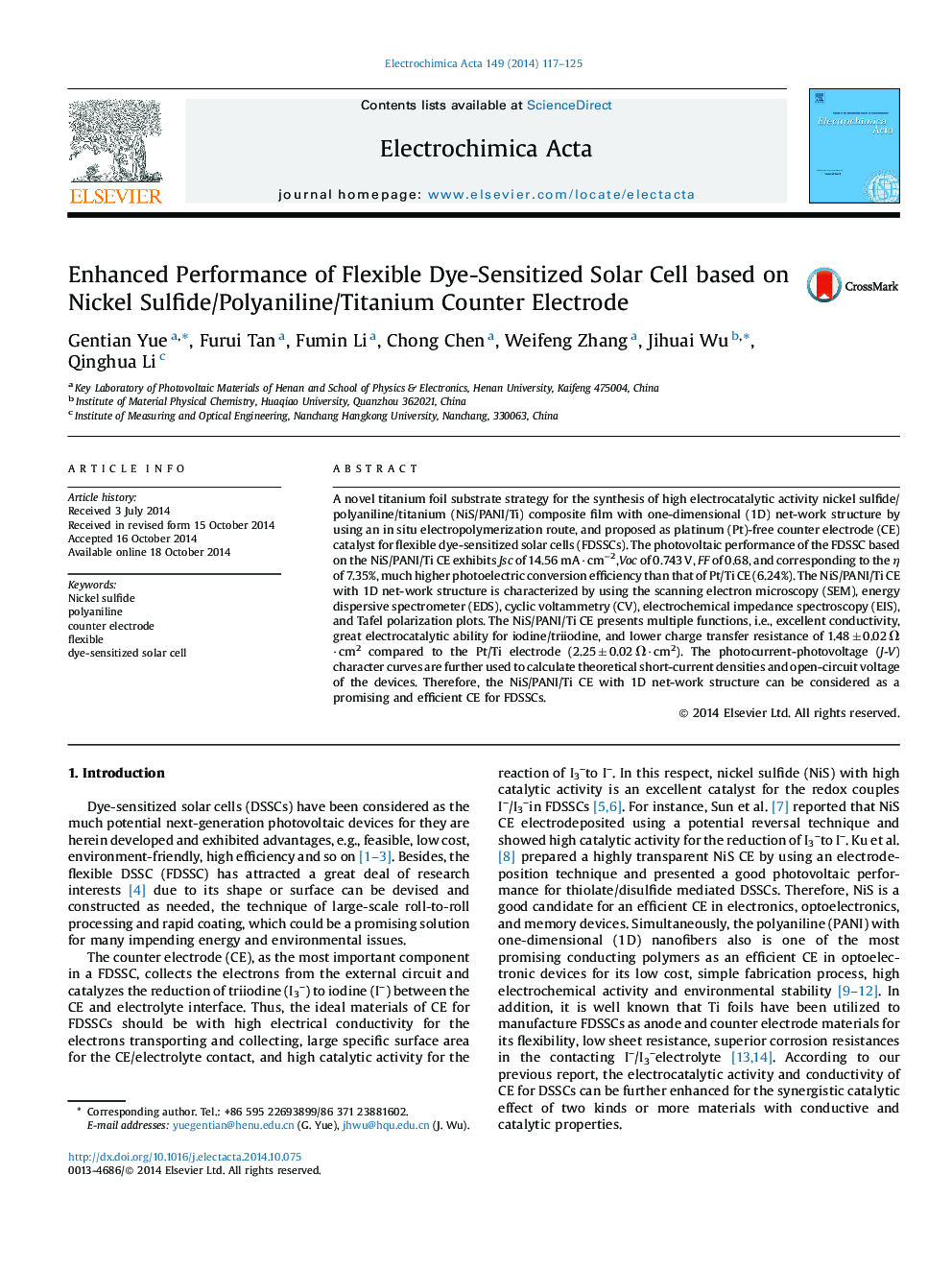| کد مقاله | کد نشریه | سال انتشار | مقاله انگلیسی | نسخه تمام متن |
|---|---|---|---|---|
| 184943 | 459586 | 2014 | 9 صفحه PDF | دانلود رایگان |
• The NiS/PANI/Ti composite were first time prepared and employed as counter electrode (CE) for Pt-free flexible DSSC.
• The NiS/PANI/Ti CE showed great electrocatalytic ability and low resistance of 1.48 ± 0.02 Ω · cm2 for I–/I3–electrolyte.
• The power conversion efficiency of the FDSSC reached 7.35% based on the NiS/PANI/Ti CE.
A novel titanium foil substrate strategy for the synthesis of high electrocatalytic activity nickel sulfide/polyaniline/titanium (NiS/PANI/Ti) composite film with one-dimensional (1D) net-work structure by using an in situ electropolymerization route, and proposed as platinum (Pt)-free counter electrode (CE) catalyst for flexible dye-sensitized solar cells (FDSSCs). The photovoltaic performance of the FDSSC based on the NiS/PANI/Ti CE exhibits Jsc of 14.56 mA · cm−2, Voc of 0.743 V, FF of 0.68, and corresponding to the η of 7.35%, much higher photoelectric conversion efficiency than that of Pt/Ti CE (6.24%). The NiS/PANI/Ti CE with 1D net-work structure is characterized by using the scanning electron microscopy (SEM), energy dispersive spectrometer (EDS), cyclic voltammetry (CV), electrochemical impedance spectroscopy (EIS), and Tafel polarization plots. The NiS/PANI/Ti CE presents multiple functions, i.e., excellent conductivity, great electrocatalytic ability for iodine/triiodine, and lower charge transfer resistance of 1.48 ± 0.02 Ω · cm2 compared to the Pt/Ti electrode (2.25 ± 0.02 Ω · cm2). The photocurrent-photovoltage (J-V) character curves are further used to calculate theoretical short-current densities and open-circuit voltage of the devices. Therefore, the NiS/PANI/Ti CE with 1D net-work structure can be considered as a promising and efficient CE for FDSSCs.
Figure optionsDownload as PowerPoint slideMuch higher photovoltaic performance of flexible dye-sensitized solar cell with NiS/PANI/Ti counter electrode as well as that of Pt configuration device.
Journal: Electrochimica Acta - Volume 149, 10 December 2014, Pages 117–125
